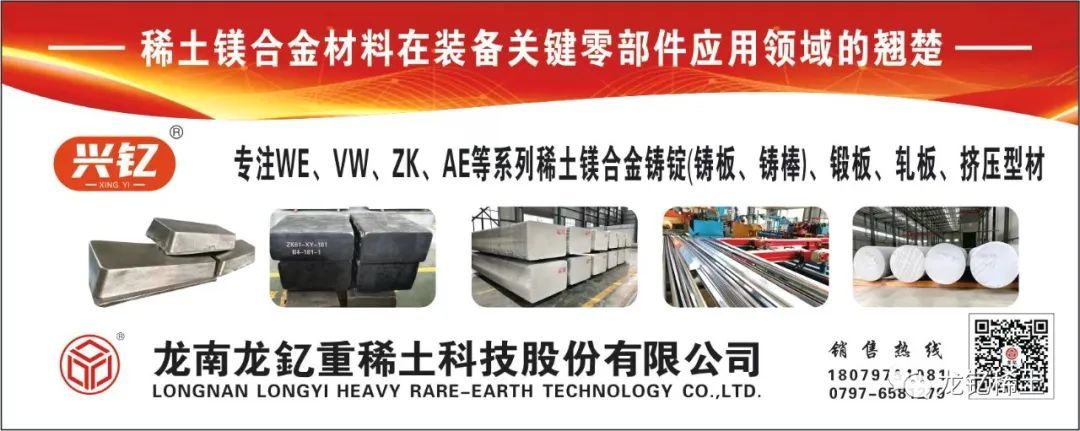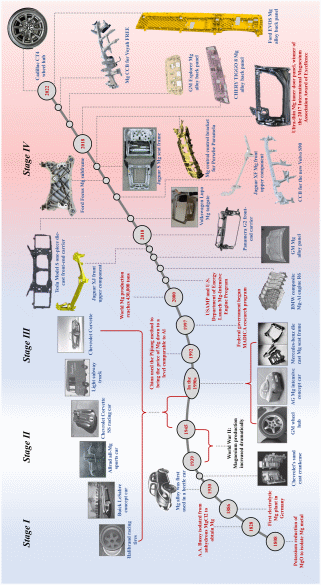09
2023
-
10
Development and Application Status and Trend of Global Automotive High-end Magnesium Alloy Parts
Author:
China is currently vigorously implementing the "energy conservation and emission reduction" and "double carbon" strategies. As a light metal material with the most resource advantage in China, the application of magnesium (Mg) alloy in automobile and other fields is gradually expanding. Chongqing University, Shanghai Jiaotong University and Australian National University have conducted extensive research on the preparation, properties and technology of magnesium alloys. In the past 20 years, the proportion of magnesium alloy in the automobile industry has gradually expanded, but the design and development of magnesium alloy parts for automobiles are rarely reported. Therefore, this paper summarizes the application mode and typical parts of magnesium alloy from the four major systems of the vehicle (body system, chassis system, power system, interior system and exterior system).

Major auto parts manufacturers are investing in the production and development of magnesium alloy automotive die castings. According to the "Energy Saving and New Energy Vehicle 2.0 Technology Roadmap", the vehicle lightweight coefficient will be gradually reduced [58]. At present, there is still a huge gap between the global use of magnesium alloys for bicycles and the target value of magnesium alloys for bicycles in 2030, and the demand for magnesium alloys for automobiles has strong potential for expansion.
The automotive manufacturing industry has the highest share of magnesium alloy consumption, at about 70%[59]. Magnesium alloy automotive parts are diverse, structural parts (seat frame and front frame), high-temperature parts (cylinder block) and sports parts (wheels) all have the common characteristics of low mechanical and chemical loads. Figure 1 summarizes the development history of automotive magnesium alloy components and gives examples of OEM. The development of magnesium alloys is closely related to policy, environment, demand and other factors. In this paper, the development of magnesium alloy is divided into four stages based on the time and the case of OEM magnesium alloy products. This paper focuses on the successful cases of OEM in the past 20 years, mainly focusing on the fourth stage.
1. magnesium alloys in the historical process of the development of auto parts

1 Magnesium alloy in the historical process of the development of auto parts
The first stage: in 1808, British chemist Humphrey David isolated magnesium metal [60],[61],[62], but it was not until 1828 that Antoine-Alexander Bussey isolated pure magnesium from anhydrous magnesium chloride [63]. By the 1880 s, Germany had established the world's first electrolytic magnesium plant and began to industrialize the production of magnesium alloys. As early as the 1930 s, Germany took the lead in applying magnesium alloys to the automotive industry. A few years later, the Soviet government put magnesium alloys into the production of aircraft. For the first time in the UK, magnesium alloys were applied to motorcycle gearbox housings. During this period, the output of magnesium alloy reached 1200 tons/year.
Phase II: During World War II, the production of magnesium alloys increased dramatically due to the manufacture of military equipment [64]. However, after 1946, the development of magnesium alloys began to stabilize.
The third stage: Until the 1990 s, affected by automobile exhaust emissions, energy consumption and environmental protection policies, countries around the world began to pay attention to the development and research of magnesium alloys.
Phase 4: By the 2010 s, the use of magnesium and aluminum alloys in car bodies and closures has grown rapidly due to their excellent material properties, especially for pure electric and hybrid vehicles. Especially in the last 20 years, major original equipment manufacturers have been increasing the use of magnesium alloys in automobiles, resulting in many magnesium alloy components on the market.
Application field of 2. magnesium alloy series in car body
Table 2 provides a comprehensive overview of the mapping of different series of magnesium alloys for automotive components [45]. Currently, AZ91D, AM60B and AM50 are the most common materials for automotive magnesium alloy applications. Therefore, this section reviews and summarizes the application of magnesium alloys in body systems, chassis systems, power systems, and interior and exterior systems [21,29,65,66].

Table 2 Application fields of magnesium alloy series on car body
Summary and Prospect
As an engineering material, magnesium has gained a firm foothold in the automotive industry with its excellent properties. The main purpose of the review is to illustrate the wide application of magnesium alloys in the automotive industry with examples to increase the confidence of OEMs in developing new parts. At the same time, the application of magnesium alloy still follows the principle of using suitable materials in suitable places, giving full play to its advantages of light density and good fluidity, and trying to avoid shortcomings such as low strength and easy corrosion. From this, the following core conclusions are obtained:
(1) The mainstream materials in automotive applications are AM50/60 and AZ91D series magnesium alloys, and the most common molding process is die casting.
(2) In order to avoid the shortcomings of the low load-bearing performance of the material itself, Mg is not used in beam-based structural parts with very high load-bearing requirements, but it is generally used in the form of a skeleton or bracket in the assembly parts of automobile disassembly.
(3) Magnesium is suitable for environmental galvanic corrosion that is not easily affected by the following factors, such as the steering wheel bone wrapped in plastic, the CCB placed in the instrument panel, and the seat frame wrapped in foam and leather.
(4) On the basis of high raw material costs, structural design and optimization are carried out in an attempt to break through and reduce costs.
It is encouraging that magnesium is a promising material. Many multinational and interdisciplinary collaborations are working on magnesium alloy additive manufacturing and hydrogen storage technologies. A large amount of research is actively helping to develop magnesium alloys as high-quality lightweight materials, including incomplete database systems, joining and assembly processes, narrow hot working temperature ranges, uneven plastic flow, virtual software development, high costs, Materials for storing hydrogen, etc.
The development of magnesium alloy in the automotive industry is limited by the problems of process and cost, the lack of technological innovation ability and the contradiction of industrial structure. However, this fully demonstrates that the application is promising. In order for magnesium alloys to become alternative materials with additional environmental and economic benefits, the production of automotive parts must be closer to consumers. In addition, with policy support, more attempts to adopt green power electrolytic magnesium technology is a recyclable and ecological way. These challenges are global and require strong cooperation from the industry chain. In the near future, new magnesium alloy structures and technological breakthroughs will better meet the growing demand for lightweight vehicles.
Source: Automotive Materials Network
Disclaimer: This article is reproduced on the Internet and is copyrighted by the original author. Only indicate the source of reprint, such as the wrong source, involving copyright issues, please contact us, we will be the first time to negotiate copyright issues or delete the content. The content is the original author's personal opinion and does not mean that this public number is responsible for its authenticity.
Summary of Common Metal Forming Process
2023-10-12









